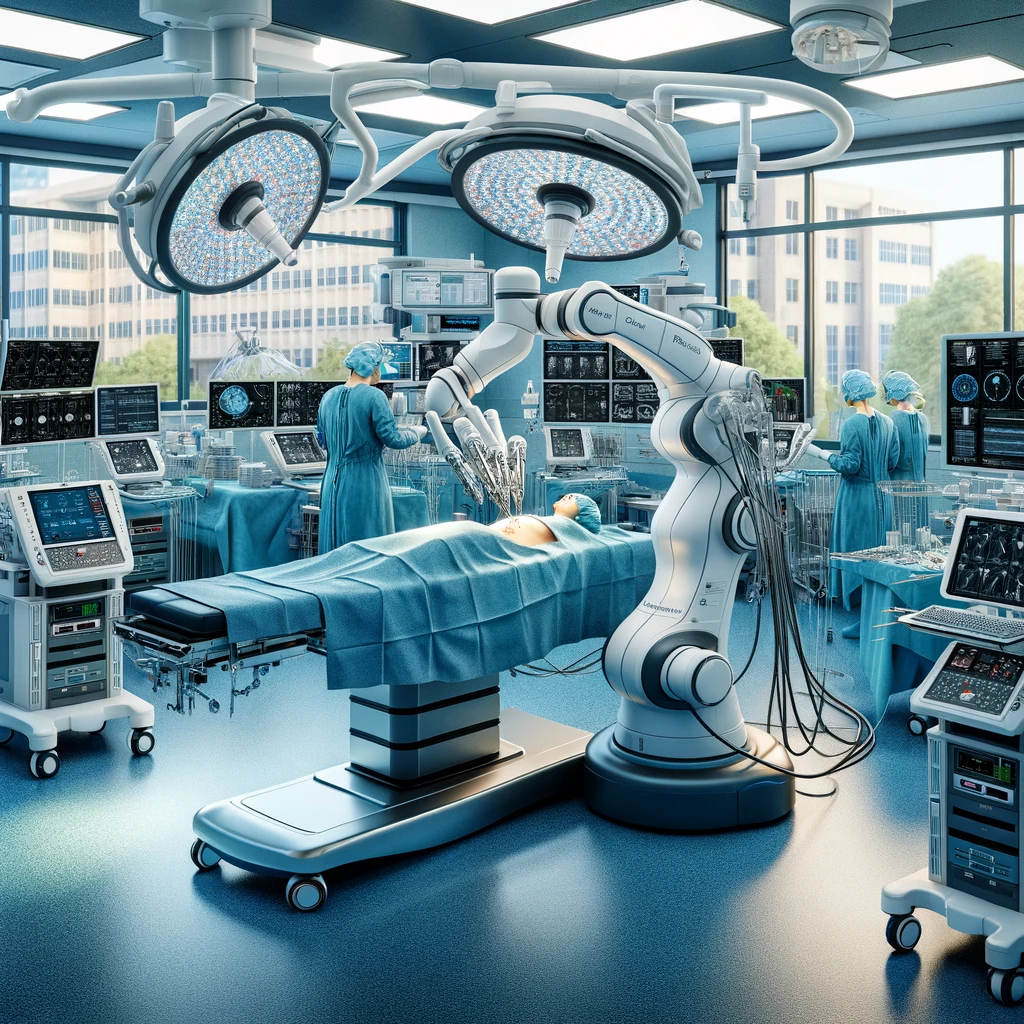
Introduction
In recent years, the integration of robotics into healthcare systems has sparked significant debate and discussion. This article aims to provide an informative and objective analysis of the pros and cons associated with robotics in healthcare. We will delve into the key factors influencing this burgeoning field, discussing tradeoffs, challenges, and the paramount importance of considering the impact on patient care.
Understanding Robotics in Healthcare
Defining Robotics in Healthcare (H2)
Robotics in healthcare involves the use of automated technologies to assist medical professionals in various tasks, ranging from surgery to rehabilitation and beyond. These technologies encompass a wide array of devices, including robotic surgical systems, exoskeletons, and telepresence robots.
The Evolution of Robotics in Healthcare (H2)
Over the years, advancements in robotics have revolutionized healthcare delivery. From the first robotic surgical system introduced in the 1980s to the sophisticated robots of today, the field has witnessed remarkable progress. These advancements promise improved precision, efficiency, and outcomes in patient care.
Applications of Robotics in Healthcare (H2)
The applications of robotics in healthcare are diverse and far-reaching. Robotic surgical systems, such as the da Vinci Surgical System, enable minimally invasive procedures with greater precision and control, leading to reduced trauma, shorter hospital stays, and faster recovery times for patients. Exoskeletons and assistive robots aid individuals with mobility impairments in rehabilitation and daily activities, enhancing their independence and quality of life. Telepresence robots facilitate remote consultations and medical interventions, overcoming geographical barriers and expanding access to specialized care in underserved areas.
Pros of Robotics in Healthcare
Enhanced Precision and Accuracy (H2)
One of the primary advantages of robotics in healthcare is the ability to perform complex procedures with unparalleled precision and accuracy. Robotic surgical systems, for instance, allow surgeons to execute intricate maneuvers with sub-millimeter precision, reducing the risk of human error and complications.
Minimally Invasive Procedures (H2)
Robotic-assisted surgeries often enable minimally invasive procedures, resulting in smaller incisions, reduced blood loss, and faster recovery times for patients. This approach offers numerous benefits, including decreased postoperative pain and shortened hospital stays, ultimately enhancing the overall patient experience.
Remote Patient Monitoring and Telemedicine (H2)
Advances in telepresence robots and remote monitoring technologies facilitate enhanced patient care, particularly in remote or underserved areas. These robotic solutions enable healthcare providers to remotely assess patients, monitor vital signs, and deliver timely interventions, thereby improving access to quality care.
Increased Efficiency and Productivity (H2)
Robotics can enhance the efficiency and productivity of healthcare delivery by automating repetitive tasks, streamlining workflows, and reducing healthcare provider fatigue. Robotic systems, such as pharmacy robots and automated dispensing cabinets, optimize medication management processes, minimize medication errors, and free up healthcare professionals to focus on patient care.
Training and Education Opportunities (H2)
The integration of robotics in healthcare creates new training and education opportunities for healthcare professionals, students, and researchers. Simulation-based training with robotic surgical simulators allows surgeons to hone their skills in a safe and controlled environment, leading to improved surgical proficiency and patient outcomes. Additionally, academic institutions and healthcare organizations collaborate to develop innovative curricula and interdisciplinary training programs in robotics and healthcare technology.
Cons of Robotics in Healthcare
High Initial Costs (H2)
One of the significant barriers to widespread adoption of robotics in healthcare is the high initial investment required. Acquiring and implementing robotic systems entail substantial financial outlays, including equipment purchase, training, and maintenance expenses, which may pose challenges for healthcare institutions, particularly those with limited resources.
Technological Limitations and Dependence (H2)
Despite their advancements, robotic technologies still face inherent limitations and dependencies. Complex procedures may require extensive setup and calibration, while technical malfunctions or system failures could potentially compromise patient safety and outcomes. Additionally, the reliance on technology raises concerns regarding cybersecurity threats and data privacy.
Ethical and Social Implications (H2)
The integration of robotics in healthcare raises ethical and social considerations that warrant careful deliberation. Questions regarding autonomy, accountability, and the human-robot relationship emerge as robots assume increasingly autonomous roles in patient care. Furthermore, concerns about job displacement and the dehumanization of medicine necessitate thoughtful reflection on the societal implications of widespread robotic adoption.
Balancing the Scales: Tradeoffs and Challenges
Navigating Ethical Dilemmas (H2)
As we navigate the integration of robotics in healthcare, it is crucial to address ethical dilemmas and societal concerns. Striking a balance between technological advancement and ethical considerations requires transparent dialogue, robust regulatory frameworks, and multidisciplinary collaboration among stakeholders.
Ensuring Accessibility and Equity (H2)
While robotics hold immense promise for advancing healthcare delivery, ensuring accessibility and equity remains paramount. Efforts to mitigate disparities in access to robotic technologies, particularly among marginalized populations, are essential to realizing the full potential of these innovations and promoting health equity.
Regulatory and Legal Challenges (H2)
The regulatory landscape surrounding robotics in healthcare is complex and rapidly evolving. Regulatory agencies face the challenge of developing comprehensive frameworks to assess the safety, efficacy, and ethical implications of robotic technologies. Additionally, legal considerations, such as liability and malpractice issues, require careful attention to ensure patient safety and uphold ethical standards.
Addressing Healthcare Provider Concerns (H2)
Healthcare providers may harbor concerns about the integration of robotics into clinical practice, including fears of job displacement, loss of professional autonomy, and decreased patient-provider interaction. It is imperative to engage healthcare professionals in the decision-making process, address their apprehensions, and provide training and support to facilitate the seamless integration of robotics into healthcare workflows.
Conclusion
In conclusion, robotics in healthcare presents a myriad of opportunities and challenges that necessitate careful consideration. While the integration of robotic technologies offers significant benefits such as enhanced precision, minimally invasive procedures, and remote patient monitoring, it also entails inherent drawbacks, including high costs, technological limitations, and ethical implications. As we continue to navigate this dynamic landscape, it is imperative to strike a balance between innovation and ethical responsibility, ensuring that the advancements in robotics ultimately serve the best interests of patients and society at large.

Jordan Cooper
Jordan CooperJordan Cooper is an insightful tech author and editor, with a degree in Communication from Midwestern State University. Known for a down-to-earth writing style, Jordan expertly deciphers complex tech topics, from AI innovations to cybersecurity trends. With over ten years in tech journalism, they have a knack for predicting and explaining tech disruptions. Jordan's approachable articles, rich in detail yet easy to grasp, have made them a favorite among tech enthusiasts and novices alike.
